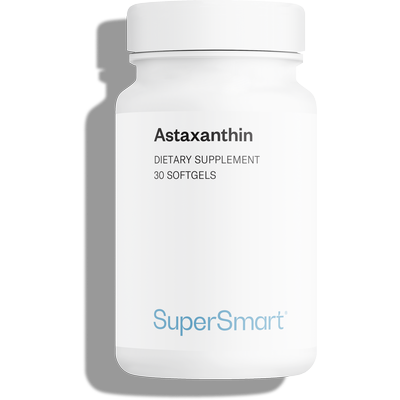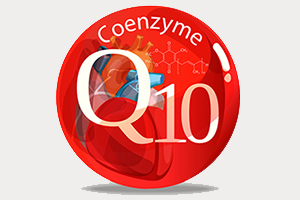16-11-2016
Astaxanthin - an exceptionally powerful antioxidant
 Astaxanthin is part of the large family of carotenoids endowed with powerful antioxidant properties. Astaxanthin is produced by several types of algae and plankton; it is the red pigment that gives salmon, shrimps and pink flamingos their colour. Since scientists first became interested in astaxanthin’s ability to neutralise singlet oxygen and eliminate free radicals, a growing number of studies have been conducted to assess its properties.
Astaxanthin is part of the large family of carotenoids endowed with powerful antioxidant properties. Astaxanthin is produced by several types of algae and plankton; it is the red pigment that gives salmon, shrimps and pink flamingos their colour. Since scientists first became interested in astaxanthin’s ability to neutralise singlet oxygen and eliminate free radicals, a growing number of studies have been conducted to assess its properties.
Astaxanthin in the human diet
The human diet provides astaxanthin in the form of seafood such as krill, prawns, lobster, cod, mackerel, salmon or other red fish. Concentrations of up to 40 mg/kg are found in wild salmon. Farmed salmon are given synthetic astaxanthin supplements in their diet and concentrations in farmed salmon flesh reach 5mg/kg. Daily intake of 4mg astaxanthin corresponds to absorption from 100g of wild salmon or 400g of farmed salmon.
Antioxidant activity
Except for a few differences in chemical and biological properties, astaxanthin is very similar to beta-carotene. Studies comparing the antioxidant activity of carotenoids show that astaxanthin, like other carotenoids, is a potent quencher of singlet oxygen. One such study found that astaxanthin neutralised singlet oxygen twice as effectively as beta-carotene (and almost 80 times more effectively than vitamin E) in a chemical solution1. Lycopene, on the other hand, was 30% more effective than astaxanthin. Similar results were produced in vitro by researchers looking at human blood cells treated with different carotenoids prior to exposure to singlet oxygen. Again, lycopene was shown to be the most effective, followed by zeaxanthin and then beta-carotene2. Astaxanthin also neutralises free radicals. One study showed that, in a chemical solution, it prevented fatty acid peroxidation 50 times more effectively than either beta-carotene or zeaxanthin3.
In a two-week study, five subjects were given astaxanthin at a dose of 3.6mg/day, another five were given 7.2mg/day and three subjects, 14.4mg/day. An antioxidant effect was noted in serum LDL, with a corresponding deceleration in oxidation as the dose increased, with no adverse side-effects observed4.
Astaxanthin and the immune system
Astaxanthin has been shown to reduce induced swelling in rats, while vitamin E had no effect5. It also helps combat symptoms of Helicobacter pylori-related ulcerative disease, reduces symptoms of gastric inflammation and is also associated with a modified inflammatory response6. While it may be that astaxanthin’s antioxidant properties are responsible for its role in inflammation, further studies are needed to better understand its specific mechanism of action.
A number of in vitro and in vivo animal tests have shown astaxanthin to have a significant effect on immune function. In vitro, astaxanthin was shown to stimulate antibody production by spleen cells in mice stimulated with sheep red blood cells7. This effect was exerted at least partly on T cells, specifically auxiliary T cells8.
A study on elderly mice suggests that astaxanthin may partially restore reduced humoral immune response9. In vitro studies on human blood cells have demonstrated that astaxanthin stimulates immunoglobulin production in response to T cell-dependent stimuli.
Astaxanthin and eye health
There is considerable evidence to suggest that certain carotenoids may play a role in protecting the retina from oxidative damage. According to one study on rats, astaxanthin effectively stops retinal damage while protecting photoreceptors from degeneration.
The study’s results suggest that astaxanthin may be beneficial in the prevention and treatment of neuronal damage associated with age-related macular degeneration10.
The photoreceptors of animals given astaxanthin suffered less damage by UV radiation and healed faster than non-supplemented rats.
Astaxanthin and cancer
Several studies in mammals have shown astaxanthin to have anti-cancer effects. One such study on mice highlighted a protective effect against bladder cancer. Scientists fed two groups of 36 and 33 mice with a carcinogen for 22 weeks before eliminating it from their diet. After an interval of one week, the second group of mice were given astaxanthin in their diet for 20 weeks. Histological examination revealed a 42% incidence of bladder tumours in the non-supplemented group and only 18% in those mice given astaxanthin11. In a second study on rats, researchers showed that astaxanthin protected against oral cancer. They gave two groups of animals a known carcinogen, with one group also given astaxanthin. They noted a slightly reduced incidence of various types of cancerous growths in the mouths of the astaxanthin-supplemented group compared with that of the carcinogen-only group. The researchers concluded that astaxanthin offered effective protection against oral cancer12. Astaxanthin’s anti-cancer effect may be linked to the role played by carotenoids in gap junction cell communication.
Astaxanthin and heart health
Astaxanthin is transported in humans by VLDL, LDL and HDL. In an in vitro test and a study in humans, daily ingestion of 3.6mg astaxanthin for two weeks protected LDL-cholesterol from oxidation induced in vitro. An animal model study showed that astaxanthin supplementation led to an increase in blood levels of HDL-cholesterol, the ‘good’ form of cholesterol inversely-associated with cardiovascular disease. Astaxanthin may thus have a beneficial effect on heart health by modifying levels of LDL- and HDL-cholesterol, as well as by reducing the inflammation thought to be linked to the development of cardiovascular disease.
1. Di Mascio P. et al., Antioxidant defense systems: the role of carotenoids, tocopherols, and thiols, Am. J. Clin. Nutr., 1991, 53: 194S-200S.
2. Tinkler J.H. et al., Dietary carotenoids protect human cells from damage, J. Photochem. Photobiol. B, 1994, 26:283-285.
3. Terao J., Antioxidant activity of beta-carotene-related-carotenoids in solution, Lipids, 1989, 24: 659-661.
4. Miki W. et al., Astaxanthin-containing-drink, Patent application number 10155459, Japanese patent office, publication date 16 June 1998.
5. Kurashige M. et al., Inhibition of oxidative injury of biological membranes by astaxanthin, Physiol. Chem. Phys. Med., 1990, NMR 22, 27-38.
6. Bennedsen M. et al., Treatment of H. pylori infected mice with antioxidant astaxanthin reduces gastric inflammation, bacterial load and modulates cytokine release by splenocytes, Immunol. Lett., 1999, 70, 185-189.
7. Jyonuchi H. et al., Studies of immunomodulating actions of carotenoids. I. Effects of beta-carotene and astaxanthine on murine lymphocyte functions and cell surface marker expression in in vitro culture system, Nutr. Cancer, 1991, 16 (2): 93-105.
8. Jyonouchi H. et al., Studies of immunomodulating actions of carotenoids. II. Astaxanthin enhances in vitro antibodies production to T-dependent antigens without facilitating polyclonal B-cell activation, Nutr. Cancer, 1993, 19(3): 269-280.
9. Jyonuchi H. et al., Immunomodulating actions of carotenoids: enhancement of in vivo and in vitro antibody production to T-dependent antigens, Nutr. Cancer, 1994, 21 (1) : 47-58.
10. Tso M.O. et al., Method of retarding and ameliorating central nervous system and eye damage, US patent #5527533, Board of trustees of the University of Illinois, United States of America, 1996.
11. Tanaka T. et al., Chemoprevention of mouse urinary bladder carcinogenesis by the naturally occuring carotenoid astaxanthin, Carcinogen, 1994, 15:15-19.
12. Tanaka T. et al., Chemoprevention of 4-nitroquinoline-1-oxide-induced oral carcinogenesis by dietary curcumin and hesperidin: comparison with the protective effect of beta-carotene, Cancer Res., 1994, 54: 4653-4659.
Order the nutrient mentioned in this article
Further reading
04-09-2019
A study published in Hypertension , the journal of the American Heart Association, has provided new evidence of this dietary supplement’s effectiveness for reducing the...
Read more13-02-2017
If you’re wondering about the benefits of zinc or how effective it is, a study published in The American Journal of Clinical Nutrition in 2016...
Read more04-07-2016
For some years, scientists have been investigating a molecule called astaxanthin which is found in microalgae. This molecule is widely considered to be a key...
Read more© 1997-2025 Fondation pour le Libre Choix
All rights reserved
All rights reserved
Free
Thank you for visiting our site. Before you go
REGISTER WITHClub SuperSmart
And take advantage
of exclusive benefits:
of exclusive benefits:
- Free: our weekly science-based newsletter "Nutranews"
- Special offers for club members only


















